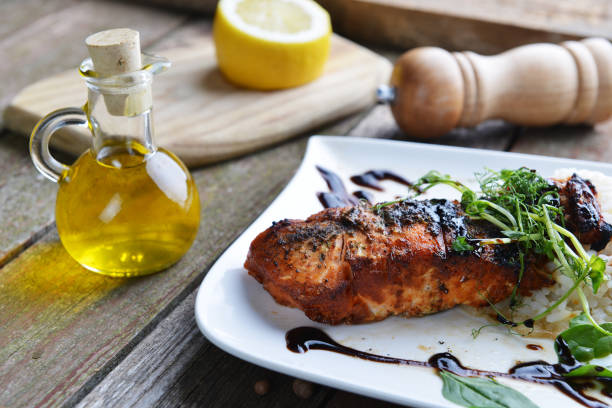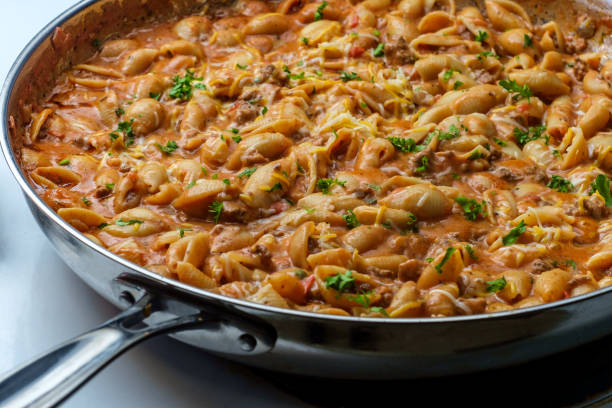20 Creative and Healthy Ways of Cooking Fruits and Vegetables
This post contains affiliate links. This means I will make a commission at no extra cost to you should you click through and make a purchase. Read the full disclosure here.
Creative and Healthy Ways of Cooking Fruits and Vegetables
Eating fruits and vegetables is an important part of maintaining a healthy diet. However, many people struggle to incorporate them into their meals. Fortunately, there are many creative and healthy ways to cook fruits and vegetables that can make them more enjoyable to eat. In this article, we will explore 20 of these cooking methods.
Table of Contents
Roasting

Roasting is a great way to bring out the natural sweetness in vegetables. To roast vegetables, cut them into bite-sized pieces, toss them with olive oil, salt, and pepper, and spread them out in a single layer on a baking sheet. Roast in the oven at 400 degrees Fahrenheit for 20-30 minutes or until they are tender and lightly browned.
Grilling

Grilling is another great way to cook vegetables. Cut vegetables into large pieces and brush them with olive oil, salt, and pepper. Grill over medium heat until tender and lightly charred.
Stir-Frying

Stir-frying is a quick and easy way to cook vegetables. Heat a small amount of oil in a wok or large skillet over high heat. Add chopped vegetables and stir-fry for 2-3 minutes or until tender-crisp.
Sautéing
Sautéing is similar to stir-frying but is done at a lower heat. Heat a small amount of oil in a skillet over medium heat. Add chopped vegetables and sauté for 5-7 minutes or until tender.
Steaming

Steaming is a gentle way to cook vegetables while retaining their nutrients. Place chopped vegetables in a steamer basket over boiling water and steam for 5-10 minutes or until tender.
Baking
Baking is a great way to cook fruits. Cut fruit into bite-sized pieces and place them in a baking dish. Top with a sprinkle of cinnamon and bake at 350 degrees Fahrenheit for 15-20 minutes or until tender.
Boiling
Boiling is a quick and easy way to cook vegetables. Bring a pot of salted water to a boil and add chopped vegetables. Boil for 3-5 minutes or until tender-crisp.
Broiling
Broiling is a fast way to cook vegetables under high heat. Place vegetables on a baking sheet and broil for 3-5 minutes or until tender and lightly charred.
Poaching
Poaching is a gentle way to cook delicate fruits like pears and peaches. Place fruit in a pot with enough water to cover them. Add sugar, vanilla extract, and cinnamon and simmer for 10-15 minutes or until tender.
Braising
Braising is a slow-cooking method that works well for tough vegetables like kale and collard greens. Sauté vegetables in a skillet, then add a small amount of liquid and simmer on low heat for 30-60 minutes or until tender.
Pickling

Pickling is a method of preserving fruits and vegetables by soaking them in a solution of vinegar, water, salt, and sugar. This method not only extends their shelf life but also adds a tangy and sweet flavor. To pickle fruits and vegetables, chop them into small pieces and place them in a jar. Then, pour the pickling solution over the top and let it sit for several days or until the desired level of pickling is achieved. Pickled fruits and vegetables can be enjoyed as a snack or used as a condiment for sandwiches and salads.
Fermenting
Fermenting is a process that involves preserving fruits and vegetables by allowing beneficial bacteria to grow. This not only extends their shelf life but also creates a tangy and sour flavor. To ferment fruits and vegetables, submerge them in a brine of salt and water and let them sit at room temperature for several days or until they are fermented to your liking.
Dehydrating
Dehydrating is a method of removing moisture from fruits and vegetables, which preserves them and intensifies their flavor. Slice fruits and vegetables into thin pieces and lay them out on a dehydrator tray or in the oven at a low temperature. Leave them for several hours or overnight until they are crispy.
Blending
Blending fruits and vegetables is a great way to make a quick and healthy drink. Combine fruits and vegetables in a blender with water or milk and blend until smooth. You can also add protein powder or other supplements to make it more nutritious.
Juicing
Juicing is a method of extracting the liquid from fruits and vegetables, leaving behind the fiber. This is a great way to get a concentrated dose of vitamins and minerals. Simply juice your favorite fruits and vegetables in a juicer and enjoy.
Smoothie Bowls

Smoothie bowls are a fun way to enjoy fruits and vegetables in a different way. Blend your favorite fruits and vegetables with yogurt or milk and pour into a bowl. Top with granola, nuts, or other toppings for a filling and nutritious meal.
Fruit Salads
Fruit salads are a classic way to enjoy fruits. Simply chop up your favorite fruits and combine them in a bowl. You can also add a dressing made of honey, lemon juice, and olive oil for extra flavor.
Veggie Noodle Bowls

Veggie noodle bowls are a fun way to replace traditional pasta with vegetables. Use a spiralizer or julienne peeler to make noodles out of zucchini, carrots, or other vegetables. Cook them in a skillet with olive oil and your favorite seasonings, then top them with protein and other toppings.
Stuffed Fruits and Vegetables
Stuffed fruits and vegetables are a creative way to make a healthy and filling meal. Hollow out a bell pepper, zucchini, or eggplant and stuff it with a mixture of cooked quinoa, vegetables, and spices. Bake in the oven until tender.
Conclusion
In conclusion, there are many creative and healthy ways to cook fruits and vegetables. Whether you prefer roasted, grilled, or blended, there is a cooking method that will suit your taste. Experiment with different methods to find the ones that work best for you.
FAQs
What are the health benefits of cooking fruits and vegetables?
Cooking fruits and vegetables can make them easier to digest and can also help to break down certain nutrients, making them more bioavailable.
Can I still get the same nutrients from cooked fruits and vegetables?
While cooking can cause some loss of nutrients, it can also make certain nutrients more available. For example, cooking tomatoes increases their lycopene content.
Can I cook fruits and vegetables in advance?
Yes, many fruits and vegetables can be cooked in advance and stored in the fridge or freezer for later use.
Are there any cooking methods that are not recommended for fruits and vegetables?
Deep-frying is not recommended for fruits and vegetables as it can destroy their nutrients and create harmful compounds.
Can I mix fruits and vegetables in the same dish?
Yes, mixing fruits and vegetables can create interesting flavor combinations and provide a variety of nutrients.







